In the early 2000s, many accident reconstructionists believed that the emergence of event data recorders meant that EDRs would replace many of the traditional accident investigation techniques.
These EDRs were commonly found integrated into the airbag control modules (ACMs) of passenger vehicles or in the engine control modules (ECMs) of heavy trucks.
While these EDRs did not replace traditional accident investigation techniques, they certainly expanded the capabilities of modern accident reconstructionists.



We find ourselves at another inflection point in the accident investigation and reconstruction industry.
In this article, we look at how—as vehicles are becoming more integrated into our modern lives—the data found in vehicular infotainment and telematics systems has become more prevalent.
As vehicles progress toward higher levels of automation, data from Advanced Driver Assistance Systems (ADAS) has become more prevalent as well, creating new possibilities for experts whose job it is to collect, analyze, interpret, and present data retrieved from passenger vehicles and heavy trucks following collisions and other accidents.
Passenger Vehicle ACM Data
Data from ACMs found in passenger vehicles record events when the vehicle has experienced accelerations, or triggers, outside normal driving behavior.
These ACMs are configured to detect collisions and determine whether the deployment of supplemental restraints—airbags, seat belt pretensioners, knee bolsters—is warranted.
After the ACM algorithm finalizes its analysis of a potential crash event, certain pre-crash data elements such as vehicle speed, engine speed, throttle position, brake usage, and post-crash data pertaining to the severity of the accident are recorded.
Numerous peer-reviewed technical publications have examined the accuracy and reliability of the data retrieved from ACMs. Figure 1 shows results from a published meta-analysis of numerous previously published validation studies and shows that ACM vehicle speed is reliable to within 1 MPH when the vehicle is not engaged in heavy braking.
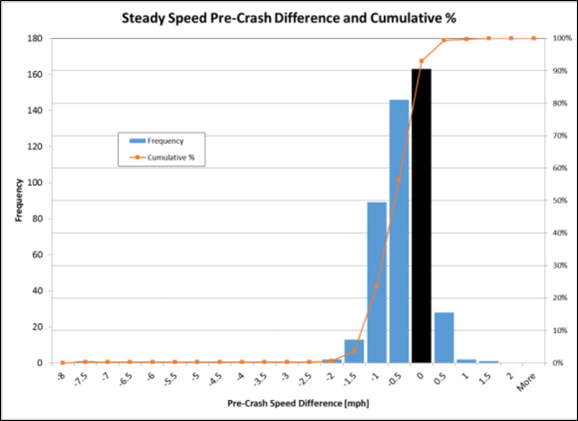
The reliability of ACM data in oblique crashes (crashes that contain frontal and side components), as well as data recorded by a vehicle that has experienced a tire tread-separation and spun out of control, have also been examined.
Heavy Vehicle ECM Data
Unlike passenger vehicles, most heavy commercial trucks are not equipped with airbag control modules. However, heavy trucks are often equipped with EDRs. The EDRs found in heavy trucks are commonly found within the ECM or the anti-lock braking system electronic control units (ECUs).
Instead of detecting crash events, these heavy vehicle event data recorders (HVEDRs), may record:
- Whether the vehicle experiences some type of fault condition (coolant loss because of a collision).
- Whether the vehicle braked or slowed above a certain threshold. These acceleration-triggered events are called “hard brake,” “sudden deceleration,” or “quick stop” events, depending on the engine manufacturer.
- Whether the vehicle experienced an ABS event (whether internal or external), stability control, or yaw control event.
- For some HVEDRs, “last stop” events related to the last time the vehicle was driven.
- Often, an “elegant” or proper shutdown of the vehicle to properly save/write data.
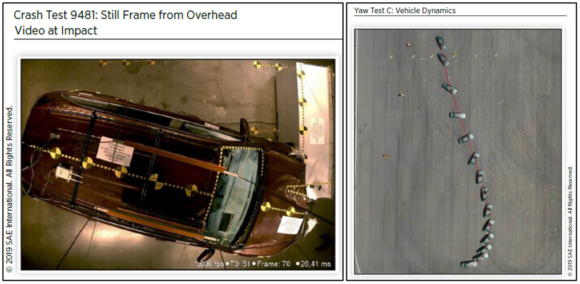
This HVEDR data can be imaged and preserved using a variety of commercially available diagnostic software packages.
Emerging Technology: Passenger Vehicle Infotainment & Telematics Systems
Many passenger vehicles have evolved to include a variety of modern conveniences in their infotainment and telematics systems including “hands-free” cellular telephone integration, back-up cameras and navigation systems.
As these systems have evolved, so has the data available to modern crash investigators and reconstructionists.
Unlike ACMs, these telematics systems do not require a collision to record data. This allows investigators to analyze data from non-crashes as well, such as crimes involving automobiles, auto theft and fraud cases.
Data from these infotainment and telematics systems include:
- Location and navigation tracklog data.
- Cell phone usage, including text messages, call logs and contact list.
- Door open and close events and seat positions.
- Gear shift events.
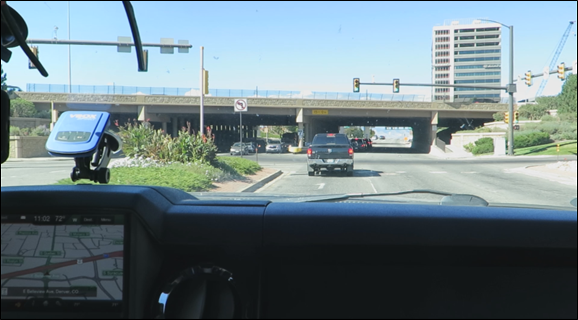
Emerging Technology: Passenger Vehicle Advanced Driver Assistance Systems (ADAS)
As vehicles continue to evolve, so do many safety systems. These ADAS include:
- Cruise control and adaptive cruise control systems.
- Driver attention alerts.
- Blindspot detection.
- Lane keeping assist and lane departure warnings.
- Forward collision warnings.
- Collision avoidance/automatic emergency braking systems.
These ADAS systems rely on a variety of cutting-edge sensors, like the ones shown in Figure 4.
Many modern ADAS subsystems use cameras. Depending on the vehicle, some of these images can be saved and recovered during the investigation of an incident.
Photographs taken during a crash can be invaluable to the investigation. Figure 5 contains a sample of photographs taken by the pedestrian detection system in a modern passenger vehicle.
Currently, the manufacturers that have cameras that record images, which can be obtained by experts include:
- Some 2016 and newer Toyota and Lexus.
- Some 2019 and newer General Motors models.
- 2023 and 2024 Jeep Grand Cherokee and Grand Waggoneers.
Furthermore, the vehicle manufacturers that have cameras that record videos leading up to an event include:
- Some 2019 and newer BMW models, which can record up to 20 seconds before and after a collision.
- Tesla vehicles, which are constantly recording videos. To obtain the videos an owner simply needs to make a request through their app.
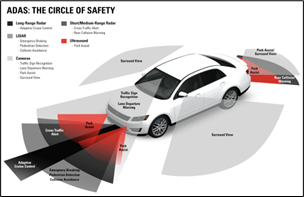
Please reach out to the authors to determine the capabilities of a vehicle in question.
Commercial Vehicle ADAS Systems Are Improving Too
Passenger vehicles are not the only vehicles on the road embracing ADAS technology. Many commercial vehicles are also using similar technologies and devices to make driving safer.
The images in Figure 6 were taken from a modern commercial vehicle ADAS system and captured photographs were taken just prior to a serious head-on accident in which the adverse driver failed to maintain their lane in a curve. Images like the ones shown in this figure can be used as objective evidence to reach an early resolution of a claim.
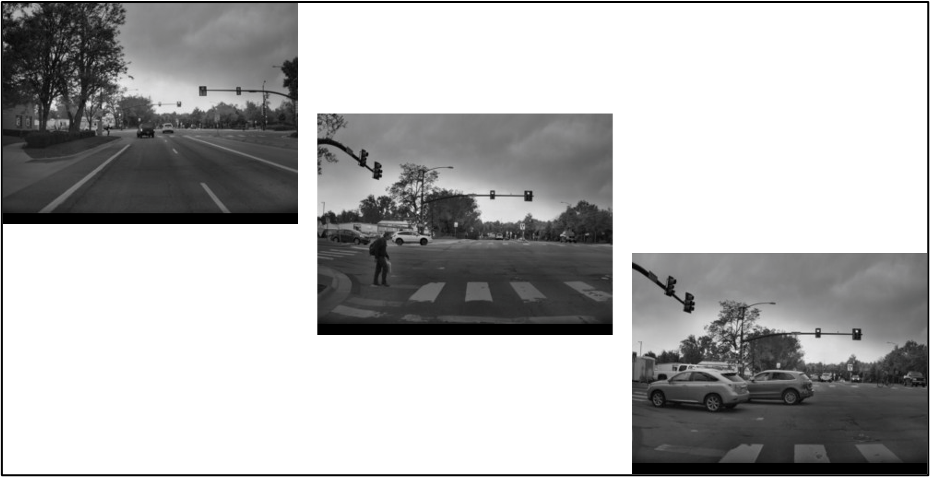
As we move forward, the importance and prevalence of data-collecting, driver-assisting, and other types of technologies will increase as usage grows and technology evolves. The data provided by these technologies has created new possibilities for accident reconstructionists who now have more information to work with than ever.
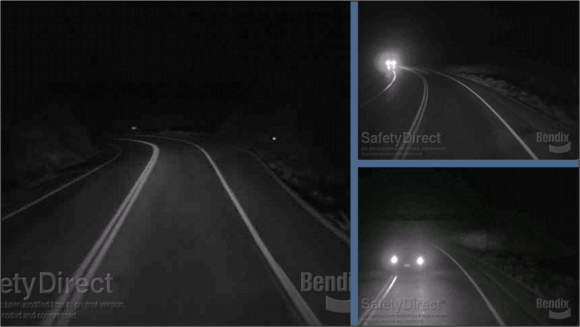
However, we should bear in mind the volatility of data. Getting data early on is key, but if it is not possible, some modules are able to retain data for long periods (months or years after recording).
Given the various types of modules that can be present in passenger vehicles and/or heavy trucks, it is best to consult an accident reconstruction expert as soon as possible so they can provide insight into the likelihood of data being available and retrievable from a vehicle.
Bortles is a senior accident reconstructionist in J.S. Held’s accident reconstruction practice. Bortles has been reconstructing accidents since 2005. He has testified in state and federal courts as an expert in accident reconstruction and event data recorders. Bortles can be reached at wbortles@jsheld.com or (303) 586-4734.
Leone is a senior technician in J.S. Held’s accident reconstruction practice. Leone has more than 28 years of experience within the automotive and marine fields and 10 years as a marine instructor. Leone’s areas of expertise include marine propulsion systems, automotive diagnostics, chassis dynamics, failure analysis, fabrication and structural repair. He can be reached at cleone@jsheld.com or (407) 707-4987.
Shaker is a director of strategic accounts in J.S. Held’s business development group. Shaker has industrial experience in nuclear energy and radiation health and safety and has recently been conducting medical research in the field of rheumatology. He can be reached at sami.shaker@jsheld.com or (905) 208-9702.
Was this article valuable?
Here are more articles you may enjoy.

 ‘Super Roofs’ Are Rewarding Insurers, Cat Bond Investors and Homeowners
‘Super Roofs’ Are Rewarding Insurers, Cat Bond Investors and Homeowners  Asahi Sales Drop Worsens as Cyber Hack Disruption Lingers
Asahi Sales Drop Worsens as Cyber Hack Disruption Lingers  Atmospheric River to Flood Pacific Northwest Through Week
Atmospheric River to Flood Pacific Northwest Through Week  NYT, Chicago Tribune Sue Perplexity AI as Copyright War Rages On
NYT, Chicago Tribune Sue Perplexity AI as Copyright War Rages On 